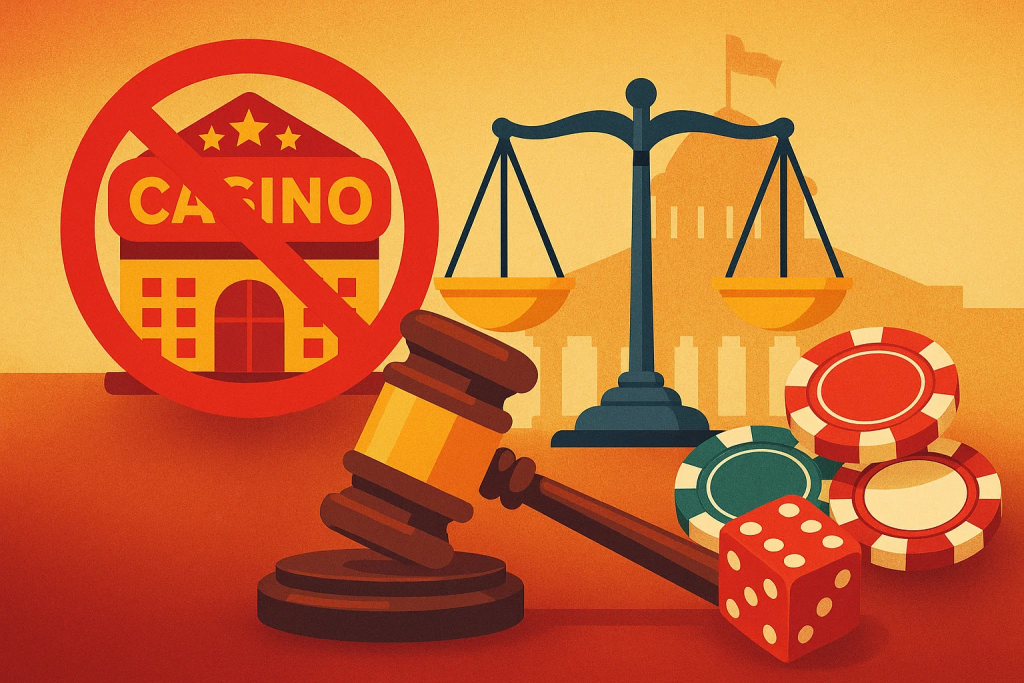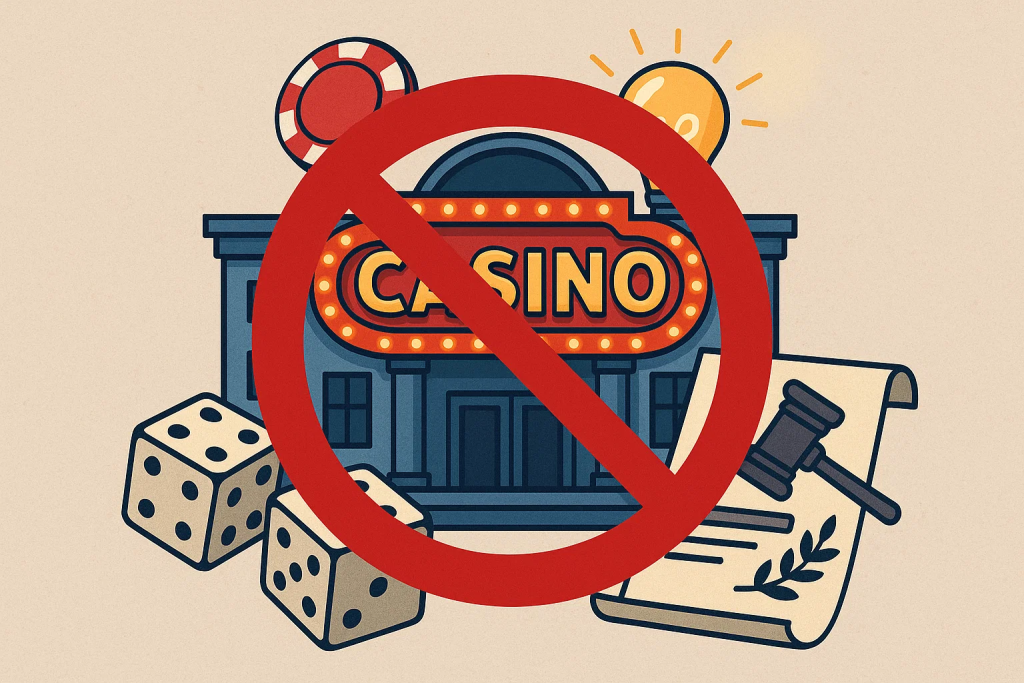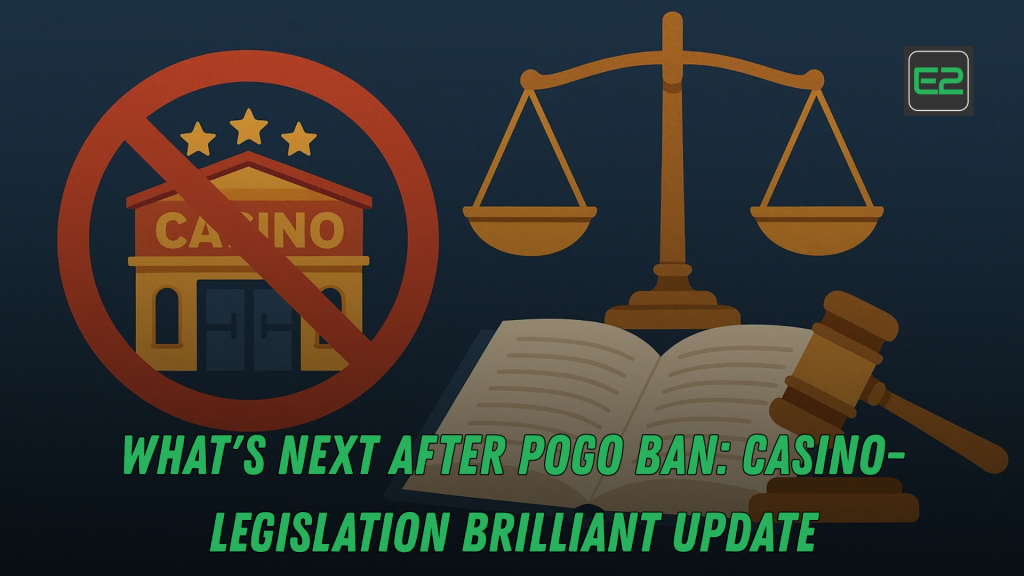Executive Summary (for busy readers)
The Philippines has formally ended offshore-facing internet gaming (“POGOs,” later rebranded by many as IGLs). That decision closes a volatile chapter, but it does not end gaming. Instead, it shifts the center of gravity to (1) land-based integrated resorts (IRs), (2) a contested but evolving space for domestic online offerings, (3) a multi-year plan to separate the state regulator from state-run casino operations through privatization, and (4) tighter guardrails across payments, advertising, and data integrity.

This article explains—in plain English—what the post-POGO landscape means for operators, investors, fintechs, ad platforms, and policymakers. You’ll get: a clear view of what changed; the likely policy pathways for domestic online play; where compliance is moving (KYC/AML, affordability, ad and wallet controls); how to redesign products responsibly; how to build a 90-day action plan; and where the risks and opportunities lie through 2026. Throughout, the core idea is simple: treat compliance as a product feature, not a tax.
1) What the POGO Ban Actually Did—and Didn’t Do
1.1 The hard stop on offshore-facing internet gaming
The national government has shut the door on offshore-facing internet gaming operators—entities designed to take wagers from users outside the Philippines or to operate within special jurisdictions for offshore markets. Licenses were terminated or allowed to lapse, winding down operations and foreign labor linked to that sector. That is not a grey area; it is a ban.
1.2 What remains legal (and essential)
- Land-based casinos—both privately run integrated resorts and state-operated venues—continue under existing regulatory frameworks.
- Domestic, regulated channels—the ability to offer online products to Philippine residents—are under active policy debate, not automatically outlawed. Some lawmakers advocate prohibition; many industry and policy voices argue for stricter regulation instead of bans to avoid black-market flight.
1.3 Why this matters
The end of offshore operations resets reputational risk and enforcement workload. But demand does not disappear. If regulated domestic channels remain, they will face higher standards. If domestic online play is later restricted or banned, land-based experiential revenue and cross-border leakage will shape the market. In both cases, the winners will be the organizations that adapt product design, payments, and marketing to a more demanding compliance climate.
2) Who’s Affected—and How POGO are affected
2.1 Operators (IRs, state venues, online licensees)
- IRs & state venues gain relative clarity: focus turns to MICE, entertainment, tourism, and responsible-gaming leadership.
- Online licensees—if permitted domestically—must build stronger KYC/AML, geofencing, affordability, and advertising governance than they did in the offshore era.
2.2 Fintechs and banks
Electronic money issuers and card issuers become the front-line gatekeepers. Expect merchant category controls, velocity limits, and tighter onboarding for gambling merchants. Wallets that support user-level self-exclusion and affordability tools will be preferred partners.
2.3 Ad platforms and creators
Advertising shifts from “bonus-first” to responsibility-first. Family-hour restrictions, age gating, odds disclosures, and creator KYB (know-your-business) checks become standard. Affiliate models must swap opaque revenue shares for transparent, licensed relationships.
2.4 Landlords and PE investors
POGO-era office footprints give way to MICE-adjacent uses (events support, hospitality back-office, wellness, medical, training centers). Investors should prepare diligence frameworks for a state-casino privatization cycle, valuing compliance credibility and non-gaming uplift as much as gaming revenue.
3) Scenarios for Domestic POGO Online Play (2025–2026)
Because the ban targeted offshore-facing operations, policymakers now face a domestic fork. Your strategic plan should model at least three plausible outcomes:
Scenario A: Regulate, Don’t Prohibit (most balanced)
- Domestic online gaming remains legal but tighter.
- Enhanced KYC/AML, affordability checks, age gating, marketing codes, and ad inventory limits are formalized.
- Payment rails require licensed merchant whitelists, MCC controls, and anomaly monitoring.
Implications: Lower short-term volume vs. pre-ban hype, but higher channelization to legal operators, more predictable tax take, and a smaller black market.
Scenario B: Prohibition of Domestic Online Gambling
- A legislative move bans online gambling to residents.
- Wallet and ad rules extend to block domestic exposure.
Implications: Land-based venues and tourism shoulder more of the legal market. Black-market and cross-border leakage risk rises; regulators rely on payments/ad tech blocks and enforcement waves.
Scenario C: POGO Hybrid with Regional Pilots
- Domestic online play allowed in controlled pilots (limited products, time windows, or regions), while the rest of the country has stricter limits.
Implications: A/B testing of harm-minimization works; regulators gather evidence to shape long-term policy.
Actionable advice: Build a core compliance stack that works under all three scenarios—then toggle features (deposit limits, ad windows, wallet partners) rather than rebuilding the product if the policy needle moves.
4) POGO Regulator Reform and Privatization: Why It Matters
The long-signaled plan is to separate the regulator from the operator role by privatizing state-run casino venues. What this means for the market:
- Regulatory credibility: A pure regulator can focus on supervision, licensing, and enforcement without the conflict of running venues.
- Asset modernization: Private owners are more likely to invest in floor upgrades, non-gaming amenities, hotel refurbishments, and responsible-gaming tech.
- M&A window: As assets are prepared for market, expect consolidation and partnerships with operators that can show robust compliance cultures and MICE know-how.
- Policy pacing: Even with slippage, a multi-year runway lets serious bidders plan capex and workforce strategies.
Investor takeaway: Due diligence should weight compliance systems and non-gaming uplift at least as heavily as historic GGR. The next cycle favors venues that win conventions, concerts, and family footfall—anchored by visible responsible-gaming frameworks.
5) Payments Are the New Perimeter
Payments policy is now the primary choke point for illegal operators—and a quality filter for legal ones.
5.1 Merchant onboarding and KYB
- Gambling merchants should expect enhanced due diligence: beneficial ownership mapping, license checks, proof of controls, and ongoing monitoring.
- Contracts will carry termination rights tied to breaches, with rapid suspension mechanisms.
5.2 Transaction controls that actually work
- MCC filters and merchant whitelists for legal operators.
- Velocity caps and behavioral triggers (unusual time-of-day patterns, surge reloads, device mismatch).
- Affordability tiers—user-level deposit limits with cooling-off periods and escalation rules.
- Self-exclusion integration between operators and wallets.
5.3 Crypto and P2P workarounds
Illegal sites migrate to crypto and informal P2P. A practical response pairs consumer education (“how to recognize illegal sites”), blocklists, on-ramp KYC, and risk-based holds—without breaking legitimate innovation.
Fintech takeaway: The wallet that proves it can protect users, block illegals, and still serve legal merchants with minimal friction will become the preferred partner across regulated gaming.
6) POGO Advertising & Influencers: From Amplifier to Gatekeeper
6.1 What to expect
- Adult-only targeting: strict age gating, no youth-oriented creative.
- Time windows: family-hour blackouts and rules on live stream placements.
- Claim discipline: odds disclosure, no “risk-free” language, clearer T&Cs.
- Affiliate registration: traceable relationships, no rogue sub-affiliates.
6.2 POGO Creator partnerships that won’t age badly
- Work only with creators who accept KYB, content boundaries, and disclaimers.
- Replace “bonus-hype” with education content: how to use deposit limits, how self-exclusion works, how to verify a licensed operator.
- Build content audits: a living library of compliant ad examples so internal teams and agencies don’t guess.
Brand takeaway: The winning brand story is safety + transparency + entertainment, not bonus fireworks. The best performing campaigns in a tight-rules era are those that respect the intelligence of regulators and users alike.
7) POGO Product Redesign for a Tight-Rules Era
Treat responsible gaming (RG) as core UX, not a separate page.
7.1 The control layer users can feel
- Real-name KYC with selfie-liveness that is fast and privacy-conscious.
- Geo-controls that politely explain why a wager is blocked outside allowed zones.
- Smart limits: daily/weekly deposit caps that remember user choices and make increases deliberately slow.
- Session clocks & reminders: friendly nudges that don’t break immersion but reduce binge risk.
- Loss-limit and time-out toggles: surfaced near the wallet, not buried two clicks deep.
7.2 Affordability without hostility
- Auto-tier users gradually; when thresholds are hit, prompt for soft evidence (income band, employment status) before asking for hard documents.
- Offer self-diagnostic tools and ROAS-neutral incentives (badges, discounts on non-gaming amenities) for users who enable tighter controls.
7.3 POGO Data & integrity by design
- Immutable event logs and data escrow for dispute resolution.
- Anomaly detection on matches, events, and player behavior—shared with the regulator via standardized formats.
- Clear privacy posture: plain-language consent, no shadow profiling.
8) POGO Land-Based Venues: Turning Policy Headwinds into Footfall
With offshore noise removed, brick-and-mortar can lean into experience economics:
- MICE flywheel: bid aggressively for conferences and festivals; create compression weekends that lift hotel ADR and F&B yields.
- Entertainment seam: concerts, sports, and pop-culture events that convert into dining and retail late-night traffic.
- Family-friendly zoning: make it obvious where gaming ends and family offerings begin; this protects brand and expands addressable market.
- Visible RG presence: staffed kiosks, self-exclusion sign-up, and helpline signage—because being seen to care is as valuable as caring.
9) Communications & Stakeholder Management
9.1 POGO Government & regulators
- Publish a Responsible Gaming Charter with measurable commitments.
- Share quarterly RG metrics: number of self-exclusions, limit uptakes, welfare referrals.
- Offer joint education sessions for local communities on recognizing illegal operators and avoiding scams.
9.2 POGO Employees & vendors
- Annual RG and AML training for all staff, not just compliance.
- Vendor code of conduct with termination triggers for non-compliant ads or payments.
9.3 POGO Public narrative
- Shift the story from “gaming as product” to “resort and entertainment with safe, legal gaming.”
- Show up at civic events: scholarships, job fairs, environmental clean-ups—consistency beats one-off PR blasts.

10) A Practical POGO 90-Day Action Plan (No Matter Your Role)
10.1 POGO Land-based casinos & IRs
Days 1–30
- Refresh your RG Charter and publish it in-venue.
- Map KYC/AML touchpoints end-to-end; close gaps.
- Review ad buys and turn off anything that could fail a youth-exposure test.
Days 31–60
- Launch limit-setting nudges on loyalty apps.
- Lock a MICE calendar with civic and private partners.
- Pilot mystery-shopper audits for ID checks and RG signage.
Days 61–90
- Run an RG awareness week; measure lift in limit adoption.
- Publish a quarterly RG snapshot and invite media for a behind-the-scenes compliance tour.
10.2 Domestic online operators (where permitted)
Days 1–30
- Implement selfie-liveness, device fingerprinting, and basic affordability tiers.
- Stand up a compliant ad playbook for agencies and creators.
Days 31–60
- Integrate wallet-layer self-exclusion and velocity caps; build a block-and-appeal flow.
- Conduct a black-market displacement sprint: SEO pages that teach users to verify licensed sites; submit illicit domains to wallets/ad platforms.
Days 61–90
- Release a transparency report (ad inventory, RG controls, response times).
- Invite regulators for a sandbox demo of your controls.
10.3 Fintechs & banks
Days 1–30
- KYB refresh for gambling merchants; roll out POGO MCC guardrails.
- Add user-side controls: category blocks, spending caps.
Days 31–60
- Calibrate behavioral monitoring; draft clear appeal and remediation pathways.
Days 61–90
- Co-author consumer education with operators and regulators; share threat intel on illegal sites.
10.4 Ad platforms & creators
Days 1–30
- Publish acceptance criteria and age-gating enforcement.
- Vet current campaigns; pause anything non-compliant.
Days 31–60
- Build a licensed advertiser registry with periodic reviews.
- Train creators on disclosure and odds standards.
Days 61–90
- Launch a brand-safety lab that pressure-tests new formats before wide release.
10.5 Landlords & PE
Days 1–30
- Re-underwrite exposure to gambling-adjacent tenants; add compliance clauses.
- Identify spaces for events, wellness, education pivots.
Days 31–60
- Court POGO MICE-support tenants (AV, staging, logistics).
- Begin privatization watchlists with early diligence frameworks.
Days 61–90
- Engage city tourism boards; align calendar to boost weekend compression.
11) POGO Risk Radar: What Could Derail Your Plan
- Domestic online prohibition: If enacted, expect deeper wallet and ad restrictions and a surge in cross-border leakage. Your hedge is land-based experiential and non-gaming revenue engines.
- Payments whiplash: Over-zealous blocks can push users to unsafe rails. Balance enforcement with legal-channel usability.
- Enforcement optics: High-profile raids and deportations will continue; ensure partners are clean.
- Privatization slippage: Timelines may slide as assets are upgraded; keep capital flexible and due diligence warm.
- Cyber & integrity threats: As online attention concentrates, attacks on wallets, KYC vendors, and match integrity are attractive; invest in resilience and incident response.
12) POGO Early-Warning Indicators Worth Watching
- Legislative calendar: movement on bills addressing domestic online play, ads, and payments.
- Wallet updates: new MCC blocks, category caps, or gambler-focused features.
- Ad-platform policy changes: influencer restrictions, time-window rules.
- Privatization signals: RFPs, asset upgrades, restructuring.
- Black-market chatter: domain migrations, crypto on-ramps, and social-media promotion trends.
13) What “Good POGO” Compliance Looks Like in 2025
- A board-level RG & Compliance Committee.
- Third-party audits and certification of key controls.
- Self-exclusion that truly travels across products and channels.
- Data transparency: privacy-safe dashboards for regulators; immutable logs for disputes.
- People systems: anonymous whistleblowing, mental-health coverage, continuous training.
- Public posture: frequent, plain-language reporting that treats the public as a partner.
14) POGO Strategic Outlook: The Likely Middle Path
The most likely destination is a middle path POGO: the offshore ban stands; enforcement continues; domestic online play, if retained, is tightly regulated; payments and advertising act as policy levers; and state-run venues move toward privatization over a multi-year arc. That approach balances harm reduction, tax stability, and reputation—while rewarding operators who treat compliance as design, not drag.
The practical translation: build once for a POGO high-bar future and toggle features as rules evolve. If prohibition arrives, your land-based and non-gaming engines will carry you. If regulated domestic channels endure, your early investment in RG, payments governance, and ad discipline will compound into trust—and market share.
Strong Call-to-Action
If you’re an operator, fintech leader, ad platform, or landlord navigating the post-POGO era, share three things: your current exposure (offshore legacy, domestic online, land-based), your biggest compliance gap (payments, ads, affordability, data), and your 90-day runway. I’ll reply with a customized one-page action sheet—the first three controls to implement, the single KPI your board should track, and a simple roadmap that turns compliance into a competitive edge.

Frequently Asked Questions (FAQ)
1) Does the offshore gaming ban mean all online gambling is illegal in the Philippines?
No. The ban targets offshore-facing operators. Domestic online gambling is a separate policy space that is currently under debate. The direction of travel points to either tighter regulation or prohibition; plan for both by building a compliance stack you can toggle.
2) What will change most for legal operators in 2025–2026?
Three levers: payments, advertising, and affordability. Expect stronger KYC/AML, wallet-level controls and self-exclusion, adult-only ad reach with clearer disclosures, and deposit/time limits that are part of the core UX.
3) How should land-based casinos adapt now that the offshore noise is gone?
Lean into experience economics—MICE, concerts, culinary, wellness—and put responsible gaming in plain sight. Use loyalty apps to nudge limit-setting, publish quarterly RG snapshots, and make your property the easy choice for families and business travelers.
4) Will privatization of state-run casinos really happen?
The policy direction is to separate regulator and operator roles by moving state venues to private hands. Timelines can shift as assets are upgraded, but serious bidders should prepare now: focus diligence on compliance culture, non-gaming uplift, and capex discipline.
5) What single metric should my board watch to know we’re future-ready?
Pick one leading indicator tied to your role. For online operators: limit adoption rate (percentage of active users with deposit/time limits enabled). For land-based venues: RG touchpoint conversion (share of visitors who interact with RG tools). For wallets: illegal-merchant block efficacy (blocked attempts vs. false positives). If that number improves month-on-month, your program is moving in the right direction.
